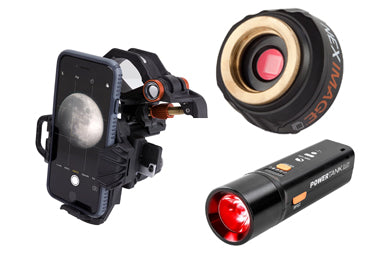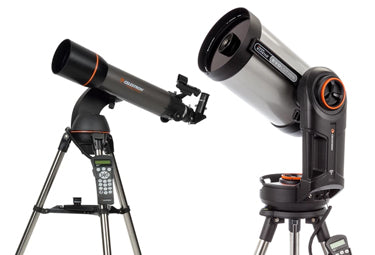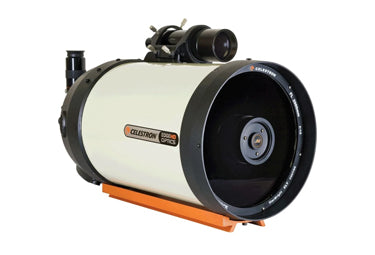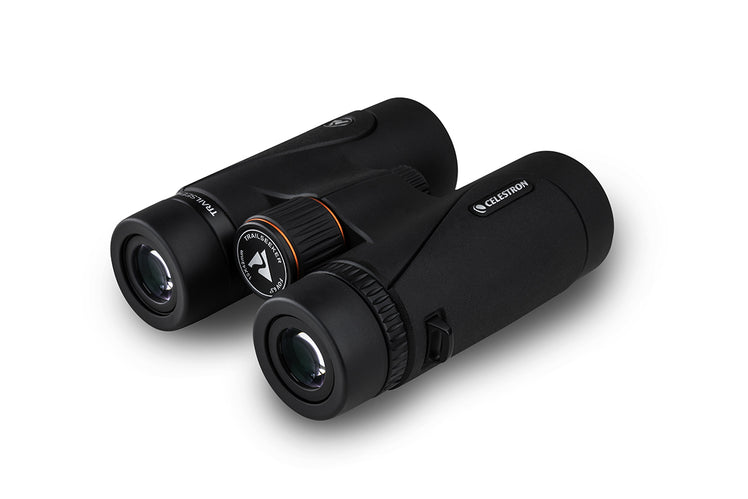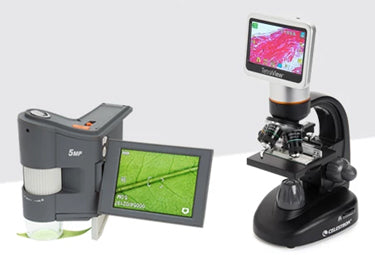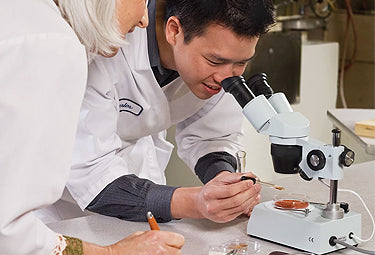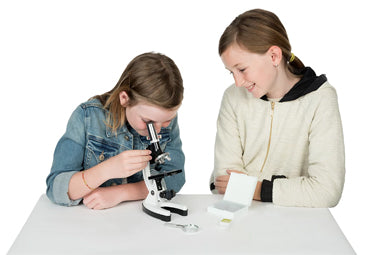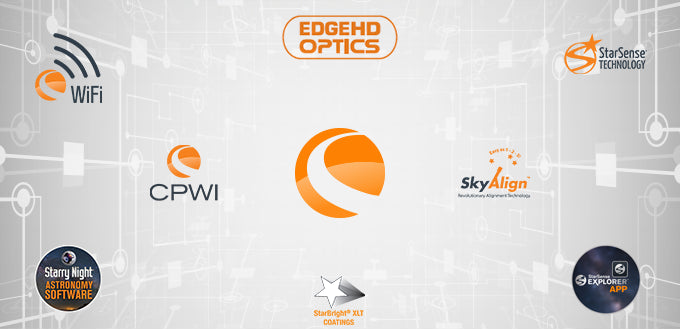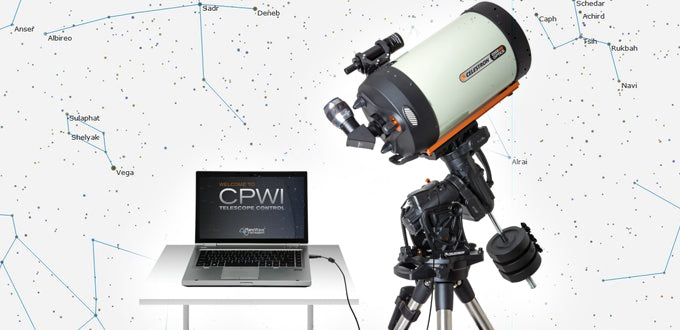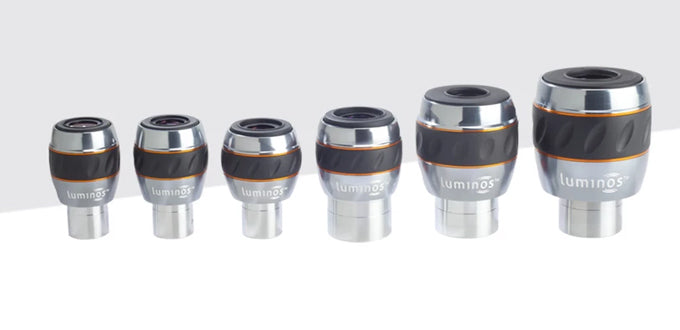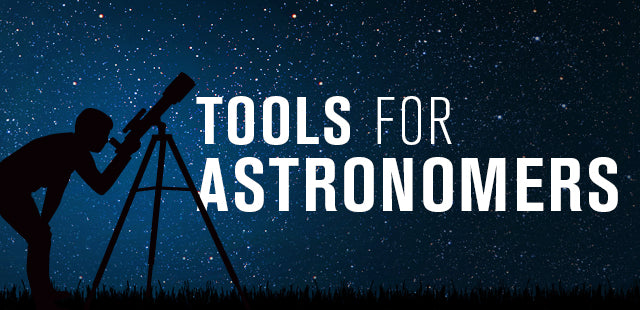Aligning Your Celestron Finderscope: A Step-by-Step Guide
December 23, 2024

Using an optical crosshair finderscope or a red-dot finderscope is easy and intuitive once you get the hang of it. We're here to guide you through the process of setting up and aligning your finderscope so you can have the best stargazing experience possible.
Step 1: Mounting the Finderscope
First things first—follow the instructions that came with your telescope to properly mount your finderscope. Getting it mounted correctly is critical for accurate pointing, so take your time and make sure everything is secure.
Step 2: Daytime Alignment
The easiest way to align your finderscope is during the day. Set up your telescope outside and aim it at a distant, stationary, land-based target like the top of a telephone pole, a street sign, or even a license plate—anything that's clearly visible from a few hundred yards away.
Insert the lowest power eyepiece you have (the one with the highest focal length number) in your telescope. Then, center your target in your main telescope's field of view. You can start by sighting down the tube to roughly point at the target, then make fine adjustments until the target is perfectly centered.
Step 3: Adjusting the Finderscope
StarPointer™ Finderscope: Position your eye about 6-12 inches behind the StarPointer™. Without moving the telescope, turn the knobs on the finderscope to make fine adjustments until the red LED is centered on the same target that you see in your telescope.
For the StarPointer Red-dot Finderscope:

For the StarPointer Pro Finderscope:

Optical Crosshair Finderscope: Place your eye close to the finderscope, just like you would with the main telescope. If the crosshairs aren’t centered on the target, use the three thumbscrews on the sides of the finderscope bracket to adjust its direction. Don't move the telescope as you make these adjustments. Once the crosshairs are centered on the same target you see through the telescope eyepiece, you’re all set!

Double-check your alignment by picking another distant object and seeing if it also appears centered in the main telescope when centered in the finderscope. Spending a little extra time on this step during the day will save you a lot of frustration when you’re out under the stars at night.
Step 4: Brightness and Illumination Adjustments
If you're using a StarPointer™ finderscope, you can easily adjust the brightness of the red dot. Turn it on or off and tweak the brightness to suit your observing conditions.
Watch Our How-To Video
Need a little more help? Check out our how-to video! It provides step-by-step instructions and plenty of helpful tips for aligning your telescope. Sometimes seeing it done makes all the difference.
Maintaining Finderscope Alignment
Once your finderscope is properly aligned, anything you point it at—like the Moon—should also appear in your telescope's eyepiece. If your telescope stays set up in one spot, the alignment will usually hold just fine. But if you’re moving or transporting your telescope, you might need to adjust the finderscope's alignment from time to time using this same process.
The dovetail mounting bracket used on Celestron’s StarPointer™ and optical finderscopes is designed to maintain alignment when you remove and reinstall the finderscope. However, optical finderscopes that use thumbscrews and spring-loaded support may shift a bit during handling or transport, which means it's more likely that you'll need to tweak their alignment before use. If your target isn’t centered in a low or medium-power eyepiece when it’s centered in the finder, it’s time for a quick realignment.
Important Note on Solar Observing
Celestron doesn’t make solar filters for finderscopes. ALWAYS remove your finderscope when observing the Sun to protect your eyes, skin, and equipment. This is crucial to prevent severe eye injury if someone accidentally looks through the finderscope while the Sun is in view and to prevent burns if concentrated sunlight hits exposed skin. Additionally, concentrated sunlight can melt the crosshairs in the finder's eyepiece, rendering it unusable.
Quick Recap
- Mount Your Finderscope Properly: Follow the instructions to ensure a secure fit.
- Align During the Day: Use a distant target and your lowest power eyepiece for easy alignment.
- Adjust the Finderscope Carefully: Use the thumbscrews or knobs to center the target without moving the telescope.
- Check Alignment Twice: Verify alignment with a second target to ensure accuracy.
- Adjust Brightness as Needed: Tweak the brightness of the red dot or crosshairs for comfortable viewing.
- Solar Safety is Crucial: Always remove or cover the finderscope when observing the Sun to protect yourself and your equipment.
Taking a few extra steps during the day to get your finderscope aligned will make all the difference when you’re under the stars. Happy stargazing!

